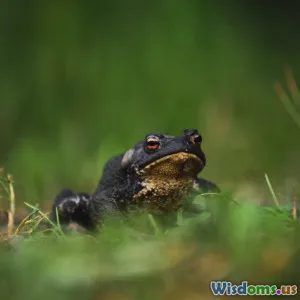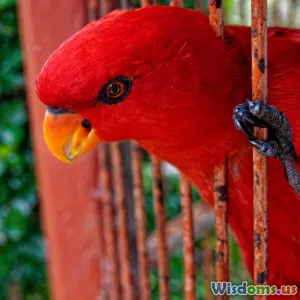
Why Naked Mole Rats Defy The Usual Mammal Aging Process
9 min read Explore how naked mole rats challenge mammalian aging with unique biology, longevity, and resistance to disease. (0 Reviews)
Why Naked Mole Rats Defy The Usual Mammal Aging Process
When you think of aging, most mammals—including humans—follow a predictable biological path: gradual decline of physiological functions, increased susceptibility to diseases like cancer, and ultimately, death. However, the naked mole rat (Heterocephalus glaber) boldly defies this rule. This strange-looking, almost hairless burrowing rodent possesses extraordinary longevity, showing little sign of aging or typical age-related diseases over its impressive lifespan. Understanding why and how naked mole rats escape the usual mammalian aging process offers fascinating insights for biology, medicine, and possibly, our own quest for longer, healthier lives.
Introduction: The Oddity Beneath The Earth
Native to the arid regions of East Africa, naked mole rats thrive beneath the soil in complex tunnel systems, leading an unusual eusocial life resembling that of ants or bees. What truly sets them apart is not just their social structure or appearance but their remarkable biological resilience. Whereas most rodents live only a few years, naked mole rats are known to survive up to 30 years—an exceptional case for a small mammal. Even more surprising, they show minimal deterioration in muscle strength, bone quality, and cognitive function through their lifespan. They are essentially biologically youthful in old age.
Exceptional Longevity And Negligible Senescence
Naked mole rats challenge the concept of senescence—the natural decline linked to aging. In most mammals, aging correlates closely with the accumulation of cellular damage, oxidative stress, and genomic instability. However, studies reveal that naked mole rats maintain stable physiological performance for decades.
Extended Lifespan Compared to Other Rodents
For context, a typical mouse, with similar body size, lives about 2 to 3 years. In stark contrast, naked mole rats often live 10 times longer, with documented wild lifespans reaching 30 years. This longevity outpaces expectations based on their metabolic rate and body size.
Scientists have described this as an example of negligible senescence—aging without the usual decline, including:
- Consistent reproductive ability: Unlike many mammals whose fertility wanes, naked mole rats can reproduce throughout most of their lives.
- Sustained cognitive capacity: Behavioral tests indicate no measurable cognitive decline in old age.
- Low mortality rates: Mortality does not increase exponentially with age, defying the Gompertz law generally observed in mammals.
Molecular and Cellular Secrets to Aging Resistance
Exceptional Resistance to Oxidative Damage
One of the main culprits of aging in mammals is oxidative stress caused by reactive oxygen species (ROS). Though naked mole rats produce similar levels of ROS as mice, intriguingly, their cells seem better equipped to repair damage or tolerate oxidative stress without functional decline.
Research published in Nature Communications highlights their enhanced protein stability and more efficient quality control mechanisms, which prevent the accumulation of damaged biomolecules.
Unique Proteomic Stability
Naked mole rat cells maintain proteome integrity far better than other rodents. Their proteins are less prone to unfolding or aggregation, reducing cellular dysfunction over time. This proteome resilience is thought to shield tissues from aging-related decline.
Superior DNA Repair Mechanisms
Additional studies suggest naked mole rats exhibit heightened DNA repair capacity, decreasing the accumulation of mutations that drive aging and cancerous changes. These superior repair processes likely contribute significantly to their healthspan.
Resistance To Cancer
Cancer resistance is one of the most fascinating traits of naked mole rats. In over 30 years of study, spontaneous cancer in wild naked mole rats is virtually unheard of. Several mechanisms underpin this phenomenon:
- Early contact inhibition: Naked mole rat cells stop dividing at lower densities compared to other rodents, preventing uncontrolled growth.
- High-molecular-weight hyaluronan: Their tissues secrete an unusual substance that promotes early growth arrest and prevents tumor development.
- Robust apoptosis pathways: Cells harbor the ability to self-destruct more readily when damaged.
This confluence of mechanisms prevents tumors, providing invaluable clues for cancer biology.
Ecological and Evolutionary Perspectives
Metabolic Adaptations to Harsh Environments
Naked mole rats have adapted to low-oxygen underground habitats. Their metabolism is uniquely suited to hypoxic conditions, favoring fructose-based glycolysis over typical oxygen-dependent pathways. This metabolic profile might reduce oxidative stress naturally, contributing to longevity.
Eusocial Behavior And Aging
Their eusocial colonies, with a reproductive queen and non-reproducing workers, may influence life history traits, including lifespan. Queens live longer, highlighting a social structure link with aging relevant in other species.
Implications For Human Aging And Medicine
The way naked mole rats resist aging and disease sparks substantial interest:
- Longevity research: Understanding their molecular defenses could lead to therapies that delay aging effects.
- Cancer therapeutics: The early contact inhibition and hyaluronan pathways inspire potential cancer prevention strategies.
- Protein homeostasis: Lessons on proteome stability may improve treatments for neurodegenerative diseases where protein aggregation is a hallmark.
Dr. Rochelle Buffenstein, a leading researcher on naked mole rats, emphasizes, "The naked mole rat shows us that aging is not inevitable—it's a biologically malleable process. By learning from nature’s most exceptional examples, we can find ways to improve human healthspan."
Conclusion: Rethinking Mammalian Aging Through a Naked Mole Rat Lens
The naked mole rat stands as an extraordinary outlier in the mammalian world, defying typical aging patterns and diseases over a lifespan far surpassing similar-sized rodents. Their unique biology—from cellular repair, oxidative stress management, cancer resistance to social structures—offers deep insights into the mechanics of aging.
While humans are complex and influenced by myriad factors, the lessons from naked mole rats fuel optimism that aging is modifiable. Continued studies could unlock medical breakthroughs transforming how we understand age, disease, and longevity.
In embracing these fascinating creatures, we open new chapters in biology that encourage us not only to marvel at nature’s diversity but to reconsider our own potential for healthy aging.
References:
- Buffenstein R. (2008). "Negligible senescence in the longest living rodent, the naked mole-rat: insights from a successfully aging species." Journal of Comparative Physiology B.
- Tian, X. et al. (2013). "High-molecular-mass hyaluronan mediates the cancer resistance of the naked mole rat." Nature.
- Lewis KN et al. (2013). "Naked mole-rat mortality rates defy Gompertzian laws by not increasing with age." eLife.
- Edwards et al. (2019). "Proteome stability and aging strategies of the naked mole-rat." Nature Communications.
Rate the Post
User Reviews
Popular Posts




















